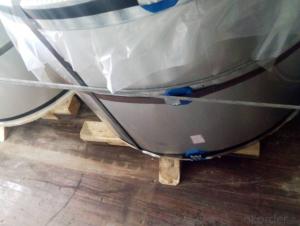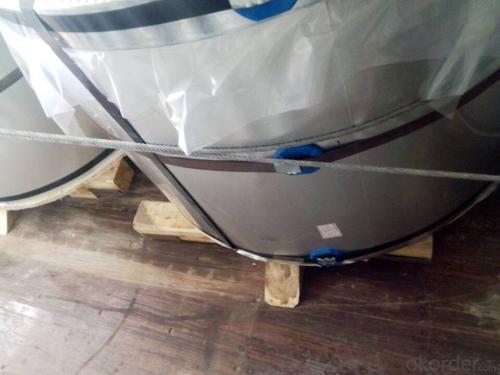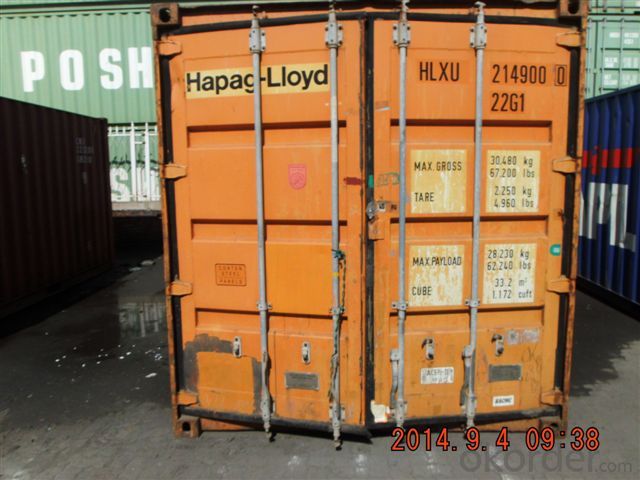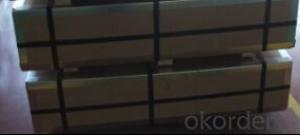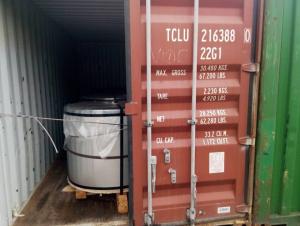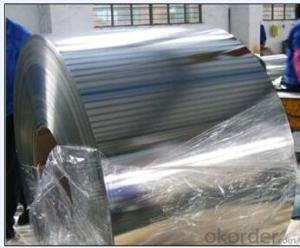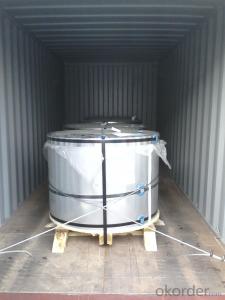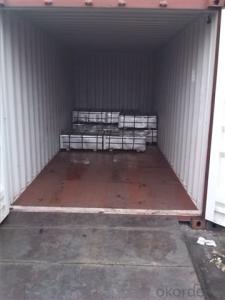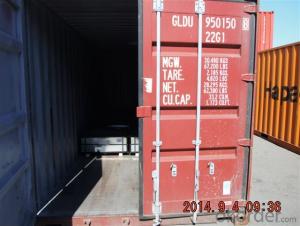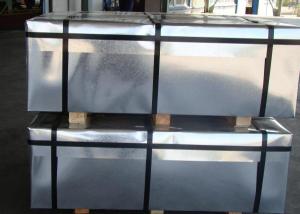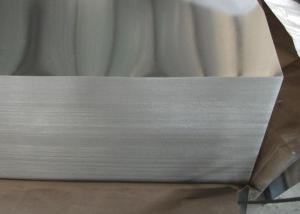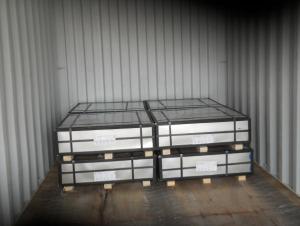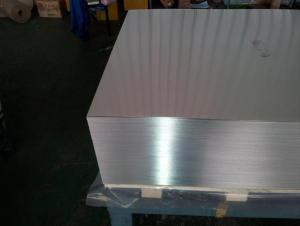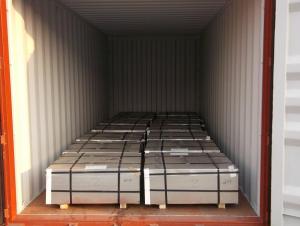ETP in MR/ SPCC Steel for General Can Packaging
- Loading Port:
- China main port
- Payment Terms:
- TT OR LC
- Min Order Qty:
- 25 m.t.
- Supply Capability:
- 30000 m.t./month
OKorder Service Pledge
OKorder Financial Service
You Might Also Like
1. Products: Tinplate
Tinplate and TFS are widely used for making all types of containers such as artistic cans, tea cans, painting cans, chemical package cans and metal printing etc. Its applications are not limited to containers; recently, they have also been used for making electrical machinery parts and many other products.
2. Specification:
Our goods enjoyed high quality both at home and abroad. We can supply tin free steel as follows:
Technical standard | JISG3303 and GB/T 2520-2008 |
Steel Type | MR / SPCC |
Thickness | From 0.15mm to 0.50mm (Tolerance +/- 0.01mm) |
Width | Normally 600-1050mm (Tolerance +3/-0 mm) |
Coating | 2.8/2.8g/m2 , 2.8/5.6g/m2 ,1.1/1.1 g/m2 |
Temper & Annealing | T1-T5, DR7-8, TS230-TH435, T49-T65(+/- 4) |
Surface Treatment | Bright & Fine Stone & Stone & Silver & Matt |
Payment terms | Letter of Credit (L/C), Telegraphic transfer (T/T) |
Price terms | CFR & CIF price term |
Delivery time | Within 60 days after received L/C or T/T down payment |
Packing | High quality shipping packing which contains thin plastic film, rust-proof paper, metal cover, metal angles and strap sand pallet. |
Minimum order Quantity(MOQ) | 25 metric tons (1X 20'' container) |
3. Pictures:
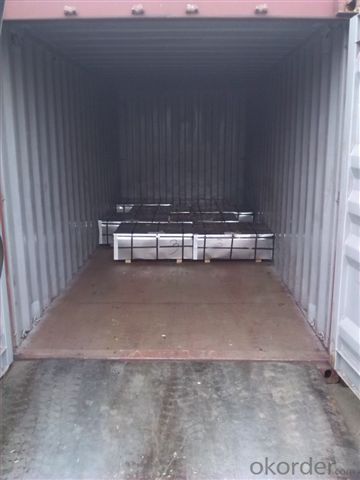
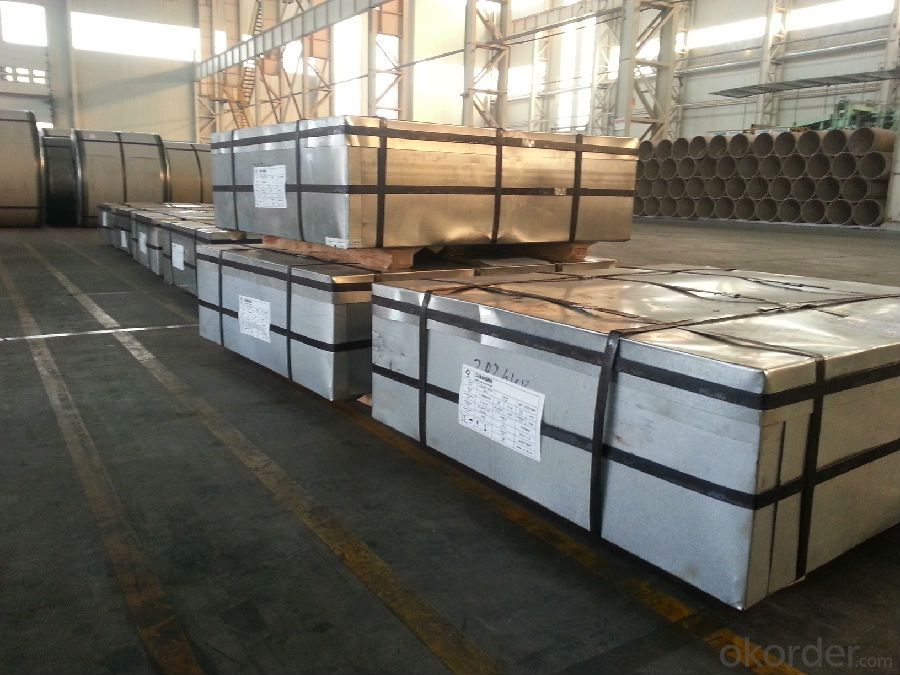
4. Features of the factory price/ tin free steel/tinplate/tfs/tmbp/etp/spte:
Beautiful Appearance
Excellent Paintability & Printability
Excellent Formability & Strength
Excellent Corrosion Resistance
Excellent Solderability & Weldability
5. FAQ:
We are one of the main producers in China for tinplate, tin free steel and also TMBP. At present, our productivity is more than 450000 MT/year.
For more information about our products or company, pls contact us freely.
Welcome your enquiries and orders.
- Q: How do you solve the water stains on the tinplate?
- The root damage is caused by waterlogging, and the transport of water and nutrients is a problem. Of course, the unnecessary dead leaves are cut off
- Q: What is tin plate?
- Tin plate, also called tin plated steel plate, is formed by tin plating on the base material of the sheet steel. Sheet steel substrate with low carbon steel as raw material, its thickness is generally 0.1 ~ 0.4mm.Tin plate according to its tin plating process can be divided into two types, namely hot dipped tinplate and galvanized tinplate.
- Q: Can tinplate be used for toys and games?
- Yes, tinplate can definitely be used for toys and games. Tinplate is a durable and versatile material that can be easily molded into various shapes and sizes, making it suitable for manufacturing different types of toys and games. Its corrosion-resistant properties also ensure the longevity of the toys, making it a popular choice in the industry.
- Q: What are the benefits of using tinplate for paint cans?
- One of the main benefits of using tinplate for paint cans is its exceptional durability. Tinplate is highly resistant to corrosion, which means it can effectively protect the paint inside from external elements such as moisture and air, ensuring its longevity. Additionally, tinplate is lightweight yet strong, making it easy to handle and transport. It is also a sustainable packaging option as tinplate cans can be easily recycled, contributing to a more eco-friendly approach. Overall, tinplate provides a reliable and cost-effective solution for storing and preserving paint.
- Q: What are the industry standards for tinplate?
- The industry standards for tinplate typically include specifications regarding the tin coating thickness, base metal quality, surface finish, dimensional tolerances, and other relevant characteristics. These standards are established by organizations such as the International Organization for Standardization (ISO) and the American Society for Testing and Materials (ASTM), ensuring consistency and quality across the tinplate industry.
- Q: How does tinplate compare to plastic-coated steel in terms of properties and applications?
- Tinplate and plastic-coated steel have different properties and applications. Tinplate is a thin, lightweight steel sheet coated with a layer of tin, which provides excellent corrosion resistance, solderability, and aesthetic appeal. It is commonly used in food and beverage packaging, as well as in the manufacturing of aerosol containers, electronic components, and various consumer products. On the other hand, plastic-coated steel is steel that is coated with a layer of plastic, typically through a process called extrusion. This coating enhances the steel's durability, impact resistance, and chemical resistance, making it suitable for applications that require protection against harsh environments or harsh handling. Plastic-coated steel is often used in construction, automotive, and electrical industries, where strength and corrosion resistance are crucial. In summary, tinplate is preferred for applications that require corrosion resistance, solderability, and a visually appealing finish, such as food packaging. Plastic-coated steel, on the other hand, is more suitable for applications that demand enhanced durability, impact resistance, and chemical resistance, like in construction or automotive industries.
- Q: How does the tin coating affect the weldability of tinplate?
- The tin coating on tinplate actually improves the weldability of the material. It acts as a protective layer, preventing oxidation and minimizing the formation of impurities during the welding process. This results in a stronger and more reliable weld, making tinplate a preferred choice for various applications requiring good weldability.
- Q: What are the advantages of using tinplate for HVAC components?
- There are several advantages of using tinplate for HVAC components. Firstly, tinplate offers excellent corrosion resistance, ensuring durability and longevity of the components even in harsh environmental conditions. Secondly, tinplate is lightweight yet strong, making it easier to handle and install. Additionally, it provides good heat conductivity, allowing for efficient heat transfer in HVAC systems. Lastly, tinplate is cost-effective and readily available, making it a cost-efficient choice for manufacturing HVAC components.
- Q: Can tinplate be used for agricultural applications?
- Yes, tinplate can be used for agricultural applications. It is commonly used for packaging agricultural products such as canned foods and beverages. Additionally, tinplate can be used for constructing storage containers, agricultural machinery components, and various farming equipment. Its corrosion resistance and durability make it suitable for these applications in the agricultural industry.
- Q: What are the different ways to recycle tinplate closures?
- There are several different ways to recycle tinplate closures. One way is to separate the tinplate from other materials, such as plastic or glass, and then melt it down to create new tinplate products. Another method is to crush the closures into small pieces and use them as aggregate in construction materials like concrete. Tinplate closures can also be reprocessed and used in the production of new closures or other metal products. Additionally, recycling facilities may accept tinplate closures and send them to specialized recycling centers for further processing.
Send your message to us
ETP in MR/ SPCC Steel for General Can Packaging
- Loading Port:
- China main port
- Payment Terms:
- TT OR LC
- Min Order Qty:
- 25 m.t.
- Supply Capability:
- 30000 m.t./month
OKorder Service Pledge
OKorder Financial Service
Similar products
Hot products
Hot Searches
Related keywords
